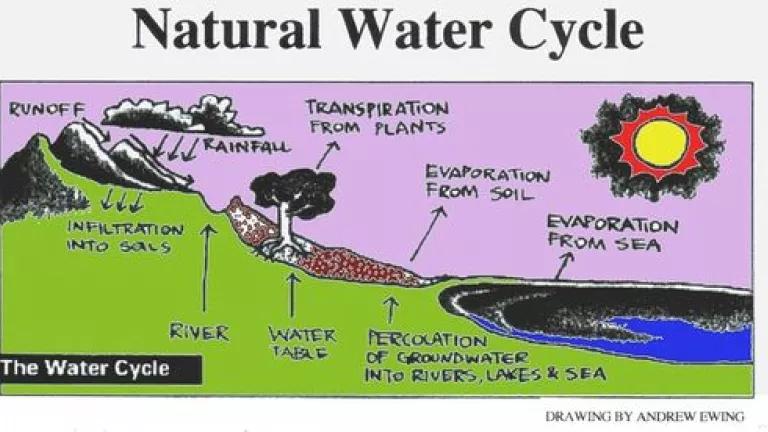
"All roads lead back to soil," said Chef Dan Barber, keynote speaker at the Food-Water-Energy Nexus Conference (FEW) I attended last week.
Soil is foundational, literally and figuratively. In matters of food, water, or energy policy, soil should be a part of nearly every discussion, but it usually isn't.
This was the theme of a FEW panel that NRDC co-organized along with the Center for Food Safety and Pennsylvania State University. We gathered policy makers, scientists, and one innovative producer to talk about soil. Allison Aubrey, a leading food and nutrition correspondent for National Public Radio, moderated our discussion and asked some thoughtful questions about the role of soil in food, water, and energy policy.
Those of us in the field of environmental science are trained to understand that everything in the natural world is connected, and therefore, important. Yet sometimes, this interconnectedness gets overlooked. In the years leading up to the Dust Bowl, American policy encouraged a massive plow-up of native grassland ecosystems. People gave little thought to the impact on the soil. We know better today, and yet still we create agricultural policies that do not consider the public and private value of healthy soil, or that mask the risks and rewards associated with soil management. Consider the following quote from our panel:
"The total annual value of soil's ecosystem services has been calculated at $33 trillion. The US GDP is $17 trillion, by comparison." - Dr. Cristine Morgan, Texas A&M
Why do environmental scientists and policy makers forget about soil? In recent years, the subject has been given more attention. But there aren't that many people in the environmental community with a background in soil science. It's a very interdisciplinary area of study, drawing from chemistry, physics, and biology, but people who are unfamiliar with it often dismiss soil science as being relevant only to agricultural work.
However, soil and water are deeply interconnected. In our panel, Dr. Henry Lin of Pennsylvania State University pointed out that 61% of the total global annual precipitation falling on land becomes green water (water stored in soils and available for plants), while 39% goes to rivers, lakes, and aquifers. Dr. Heather Gall then pointed out that in the water cycle (pictured above), water passes through the soil with nearly every arrow. Soil is a natural filter, and if the filter is dirty, the water will be, too. Good soil management is a critical piece of water use efficiency and water quality.
"The world's cultivated soils have lost between 50 and 70% of their original carbon stock, much of which has oxidized upon exposure to air to become CO2." - Diana Donlon, Center for Food Safety
Climate change is the number one focus of the environmental world, and it should be. Sustainable energy policy is often the focal point of climate change action, but improved soil health can also help in the fight against climate change. Better soil health will improve soil carbon sequestration, and reduce fertilizer use. Biofuel crops are also becoming increasingly important to agriculture, and they require soil to grow. If biofuel policies do not address the potential impact of biomass production on the soil, there could be negative consequences. And water savings from improved soil health may also reduce energy costs associated with pumping water, especially in irrigated areas.
The connection between healthy soil and sustainable food production is more obvious, but we have a long way to go to improve food policy so that it drives better soil management. Soil is a living, dynamic system and we can't even come close to replicating its functions with technology. Instead, we need farmers like Jonathan Cobb of Green Fields Farm who work with cover crops and use other regenerative techniques to restore the soil to its full potential.
My vision changed when I began to see the soil as full of life. We no longer focused on growing crops, but in growing the life in the soil. Which leads to healthy plants, animals, and people. To us, everything is a bi-product of the soil." - Jonathan Cobb
At NRDC, we are examining the potential to improve policies and programs so that they take soil into account. Read more about NRDC's work on soil here, and check out our latest report, Climate Ready Soil.
Image courtesy of Wikimedia Commons.

